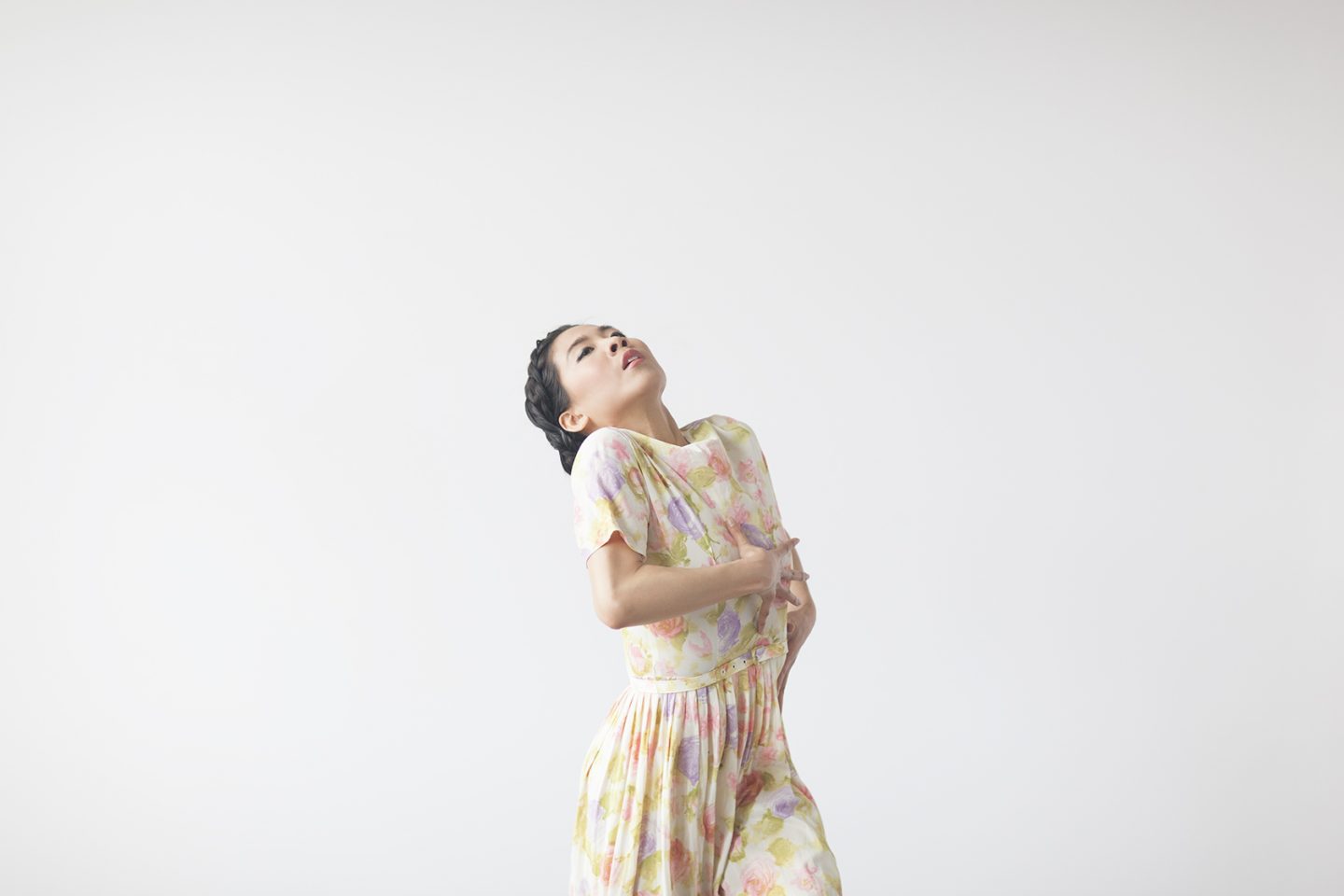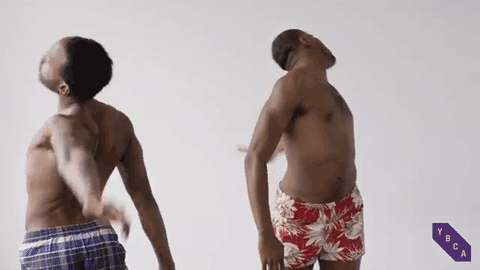Kyle Abraham Invites You into His Home With His Most Personal Work To Date

Love, longing and loss are three concepts everyone has personal experience with. And yet where else are we comfortable talking about these ideas besides home? Kyle Abraham’s newest work, his Creative Capital project entitled Dearest Home, ruminates on these three themes through a series of solos and duets. The choreography was developed through personal experiences in Abraham’s recent life, as well as a series of conversations, guided meditations and cross-cultural workshops. It is his most personal work to date. The performance premieres May 16-20, 2017 at Yerba Buena Center for the Arts.
We spoke to Kyle Abraham about the piece, his experiences, and these three themes.

Alex Teplitzky: You’re getting ready for a premiere at YBCA. How’s that going?
Kyle Abraham: It’s going well. We just did an avant-premiere at ASU Gammage theater. That was great. I’m just waiting for some feedback.
Alex: Tell me a little about how you started thinking about some of the concepts in Dearest Home.
Kyle: While we were working on our residency at YBCA in April, Prince passed away. Anyone who knows me knows that I wouldn’t be dancing if it wasn’t for Prince. I would have never known about dance if it wasn’t for Prince. I went to go see the Joffrey Ballet when I was 16 because they were dancing to Prince’s music. All the first dances that I made were all to Prince songs. The first time I danced to a piece of choreography in front of my mother and father and told them I wanted to go to arts school, it was to a Prince song. The first solo I made when I went to that arts school was to a Prince song.
It’s probably deeper than I’m allowing it to be. I think I’ve been riding on the surface of a lot of things in the past year because there’s been a lot of loss in my life. But I have a lot of things to get done, so I’m trying to figure all that out.
Alex: I remember that in your Creative Capital Retreat presentation in 2016 you were talking about the loss of your mother. Then there’s the loss of Prince that you just mentioned. There’s so much this piece has undergone, as an evolution, in terms of these ideas of loss, longing.
Kyle: I work really fast. Then I try to have time to reflect on what we’ve made and do some tweaking. In the case of Dearest Home, a lot of the material was made—we just added a new ending, recently, actually. Those are the things that change for me sometimes: the ending, or to add a section here and there. By the summer, a lot of newer sections had come into place.
Before my mother passed away, I had already been working on a section about a mother and a daughter. There are a lot of sections that were related to a relationship that I was in and navigating and going in and out of. By the time that relationship had ended, those sections existed. In some cases, I’m a little fearful that people will think that this dance is all a result of those losses. In a really eerie way, those losses are definitely in the work, but in a way that isn’t what people probably think they would be. Maybe if I allow myself to open up fully, there would be even more… I don’t even know.
It’s that weird balance where you don’t want to make the whole “woe-is-me” experience. [Laughs] It’s a pretty dark show. There are a lot of dark or depressing moments, shall we say? Sad? I don’t know the right choice of words. Especially if I’m trying to get people to come see the work!
Alex: Right, totally.
Kyle: There are a lot of somber notes to the work for sure.
Alex: But then there’s this title Dearest Home, and at the end of your Retreat presentation you say, “I invite you into my home.” Which, on the other hand, seems very welcoming.
Kyle: Yes, it is definitely by far the most personal work I’ve ever made. There’s a lot of stripping away, literally and figuratively, of a lot of different types of experiences. For me it is about my life, it is about how I feel about my life, my experience in relationships, out of relationships, seeing family members looking at their relationships with each other.
Some of the material is derived from the workshops we did in over the last two years. We worked with LGBT seniors and teens, some of them in different socioeconomic groups, having conversations about love, longing, and loss. Two to three sections, in particular, came out of those conversations and workshops.
Alex: As you’re talking more about it, it becomes clear to me that this project really resonates with people, because these topics of love, longing and loss are meaningful to pretty much everyone. Tell me more about these workshops you just mentioned.
The dance is a love letter to all of those things [love, longing, loss]… I’m not dancing in this show, but I feel more present in this work than I’ve felt in any other work.
Kyle: Sure, I was trying to bring together different groups. One of my goals was to work with LGBT or at-risk teens, and then connect them with LGBT seniors. My thought was, we can start these conversations, and then we can build relationships so that there is a type of mentorship that happens organically. Like, these people that really dig each other, or love hearing insights from one another. So that relationship happens organically, without it being connected to a show. That was my ulterior motive.
But in those dialogues, whenever we were able to do them, I would lead people on a guided meditation thinking about those themes. Connecting it to a space that they considered to be home, in whatever capacity. We did some word association and then talked about those words and their different experiences. We mixed the groups up and added some company members. I think a lot of those conversations helped the dancers in the company really connect to the work in a much more honest way. It goes well beyond the movement.
Alex: That’s really interesting. This idea of home as a place where you talk about these themes that you wouldn’t talk about in other places.
Kyle: Kind of. That title came about for a host of reasons. I had been in a long distance relationship with someone who I spoke to every day, multiple times in a day. He was my support in so many ways, in ways that I wasn’t allowing my family to be, for better or for worse. Every time I spoke to him or saw him, it really felt like home. That was a part of it.
He was with me when we were cleaning out my mother’s house when she was moving from Pittsburgh. We found these love letters that my father (who passed in 2011) had written to my mother when they were in college. So finding these letters while I’m with this man I was in love with was really weird. The letters started out “My dearest Jackie.” They were these beautiful declarations of love from my father to my mother.
The dance is a love letter to all of those things. It’s a love letter to the loss of those two people in my life. I’m not dancing in this show, but I feel more present in this work than I’ve felt in any other work. Yet I’m physically absent.
Alex: Wow. Thank you for sharing these stories with me. It sounds really personal, so I appreciate it. I feel like if those were things I had to talk about with other people, it would be really difficult.
Kyle: [Laughs] Yeah, I’m obnoxiously open at times. Sometimes I got in trouble with the ex that I mentioned. He would be like, “I can’t believe you said that!”
It’s one of the tricky things about this show. I remember talking to Phillip Bither [Senior Curator of Performing arts at Walker Art Center] years ago, around 2014, about this dance I wanted to make. This dance was originally called The Social. It was going to look at race and culture, which is my background. But after all the work we had been making, I said to myself, “I need to switch gears. I want to make something about love.”
So I said to Phillip, “I want to do this dance, I just don’t want it to come off as hokey. It’s about love and it could go wrong in so many ways.” I wanted to call him in particular because he’s such a brilliant curator. He said, “I trust you. I trust your musical interests.” And then I remembered that my favorite music group is The Smiths. [Laughs] That’s really telling. I guess that would put a darker tone on how I look at love.
Alex: You mention so many musicians, but I read that the audience can choose to watch the show while listening to music with headphones, or silently, without headphones.
Kyle: The dancers have never heard the music, and they never will hear it even during the show. The music is divorced from the process of dance.
I reached out to Jerome Begin to compose the music because I think he has a really great ear for these kinds of things. So, the audience has the choice to listen to it or not. There’s a lot of reasons for that. Part of it is because, when I go to see movies, I always wish you could watch them with headphones on because I don’t want to hear the audience or anything except the movie. It’s the same thing when I see a live performance: I want to be super present and not be hearing people’s water bottles or commentary in the audience. Or when I’m on the subway in New York: for years I would have to figure out the best soundtrack to whatever book I’m reading. Is it going to be jazz, classical or some drum n’ bass piece? Something that enhances whatever I’m reading.
That creates this whole other personalized experience that I wanted to give to the audience as well. It’s something that connects the audience to make the performance seem like it was just for them.
Dearest Home by Kyle Abraham comes to Yerba Buena Center for the Arts in San Francisco May 16-20, 2017.
